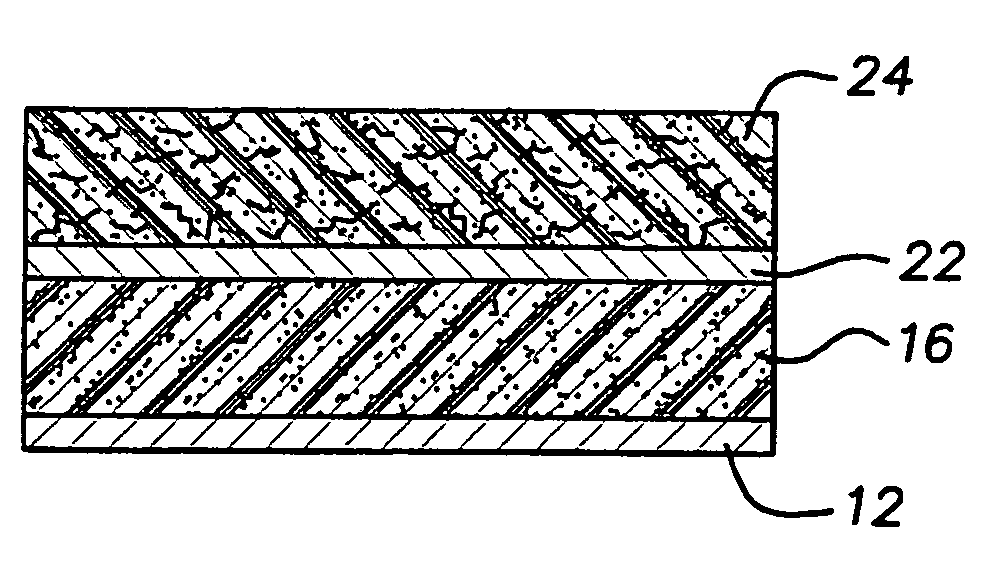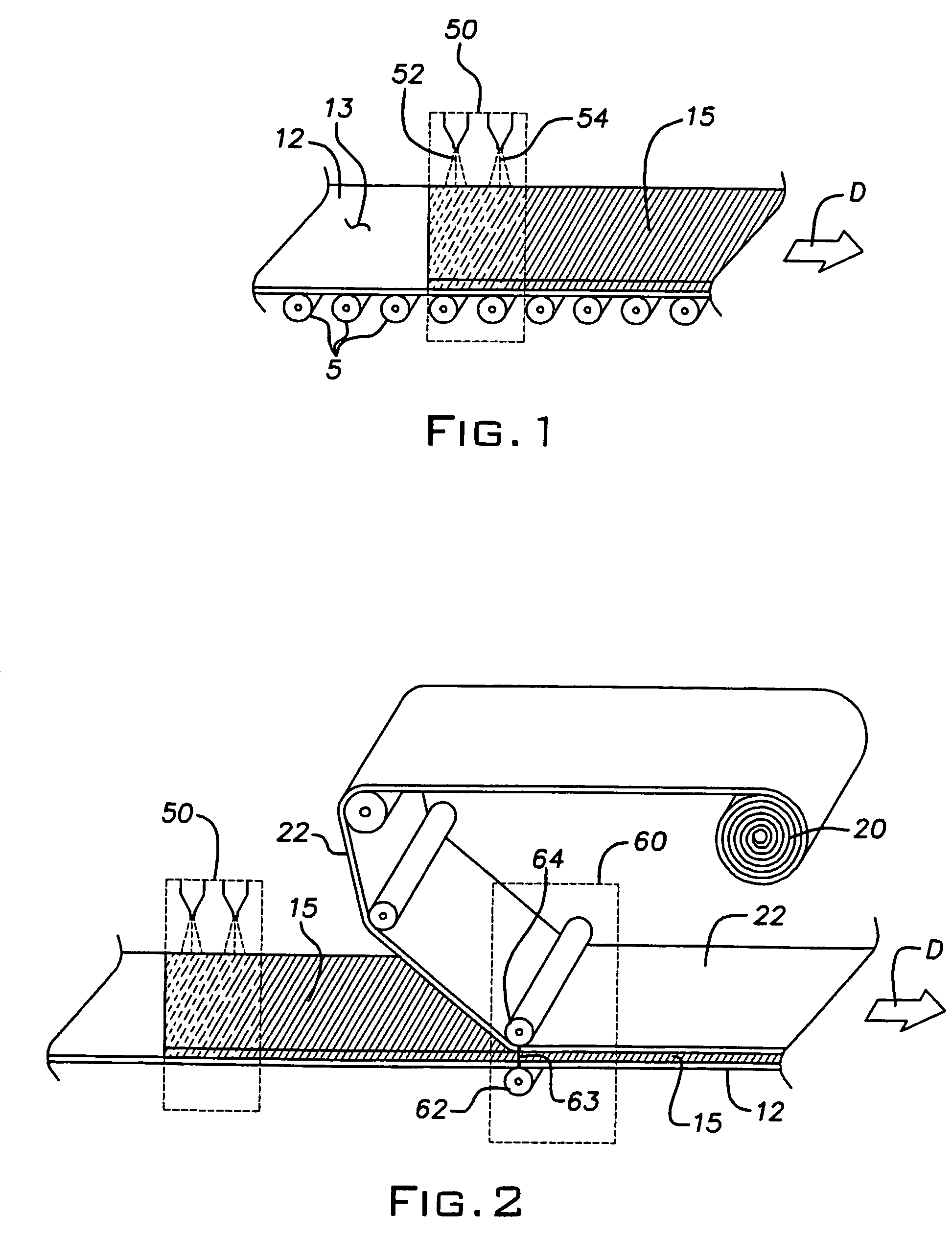Foam barrier heat shield
a foam barrier and heat shield technology, applied in the field ofdamping systems, can solve the problems of high noise and structural vibration in the passenger cabin of a traveling vehicle, high noise and structural vibration of speed tire-road contact,
- Summary
- Abstract
- Description
- Claims
- Application Information
AI Technical Summary
Problems solved by technology
Method used
Image
Examples
example 1
[0053]Four different heat shields 10 according to the invention were made having a semi-rigid polyurethane foam layer. For each of these four heat shields, the foam layer was made from a precursor foaming composition comprised of the following components in the following total weight percents:
[0054]
Multranol 4035 (sucrose-based polyether polyol)20.61Multranol 3900 (glycerin-based polyether polyol)30.92Water0.77DABCO 33LV (amine catalyst)0.72Metacure T-1 (tin catalyst)0.05DABCO DC 5164 (surfactant)0.52DABCO DC 5169 (surfactant)0.26Mondur MA2300 (allophanate-modified MDI (20-30% NCO))46.15TOTAL =100
[0055]The four heat shields were composed as follows:
[0056]Invented 1: The foam layer was sandwiched between two opposing aluminum layers each having a thickness of 0.005 inches. The overall thickness of the heat shield was about 0.1 inches, and its area density was about 0.2 lb / ft2.
[0057]Invented 2: The foam layer was sandwiched between two opposing aluminum layers each having a thickness ...
example 2
[0061]Each of the four heat shields of Example 1 was subjected to a hot box temperature drop study to compare the heat shielding characteristics of each with a number of conventional heat shielding and sound dampening materials. Specifically, the four heat shields of Example 1 were compared to:
[0062]“Straight aluminum”, a 0.03-inch thick aluminum sheet which is a conventional underbody heat shield in common use, area density of 0.44 lb / ft2;
[0063]“Laminated aluminum”, which was composed of two sheets of 0.012-inch thick aluminum sheet metal that have been crimped together to form a heat shield—this also is a conventional underbody heat shield, area density of about 0.35 lb / ft2;
[0064]“Shoddy”, a conventional acoustic absorption material composed of pressed cotton—it is typically made by pressing textile cotton waste or scraps into compressed sheets, and is conventionally used to damp noise (NVH) in automobile body panels, area density of 0.24 lb / ft2; and
[0065]“Fiberglass”, which is a ...
example 3
[0069]The four heat shields according to the invention from Example 1, along with the conventional straight aluminum material from Example 2, were subjected to a free-free modal analysis test. Each material was suspended substantially unconstrained by a string to allow for free vibration when impacted. Each of the suspended material samples was then subjected to an impulse from a force hammer. The amount of force supplied on impact and the resulting vibration in each sample were measured to determine the modal resonance or vibration of each material. Results are provided in FIG. 7.
[0070]From the figure, it is evident that all four of the invented heat shields that were tested substantially outperformed the conventional aluminum heat shield in terms of the magnitude of vibration or resonance following the impulse. Accordingly, the invented heat shields themselves are a substantially lesser source of vibrational noise due to their own vibration than the conventional aluminum underbody...
PUM
| Property | Measurement | Unit |
|---|---|---|
| Temperature | aaaaa | aaaaa |
| Fraction | aaaaa | aaaaa |
| Percent by mass | aaaaa | aaaaa |
Abstract
Description
Claims
Application Information
 Login to View More
Login to View More - R&D
- Intellectual Property
- Life Sciences
- Materials
- Tech Scout
- Unparalleled Data Quality
- Higher Quality Content
- 60% Fewer Hallucinations
Browse by: Latest US Patents, China's latest patents, Technical Efficacy Thesaurus, Application Domain, Technology Topic, Popular Technical Reports.
© 2025 PatSnap. All rights reserved.Legal|Privacy policy|Modern Slavery Act Transparency Statement|Sitemap|About US| Contact US: help@patsnap.com



